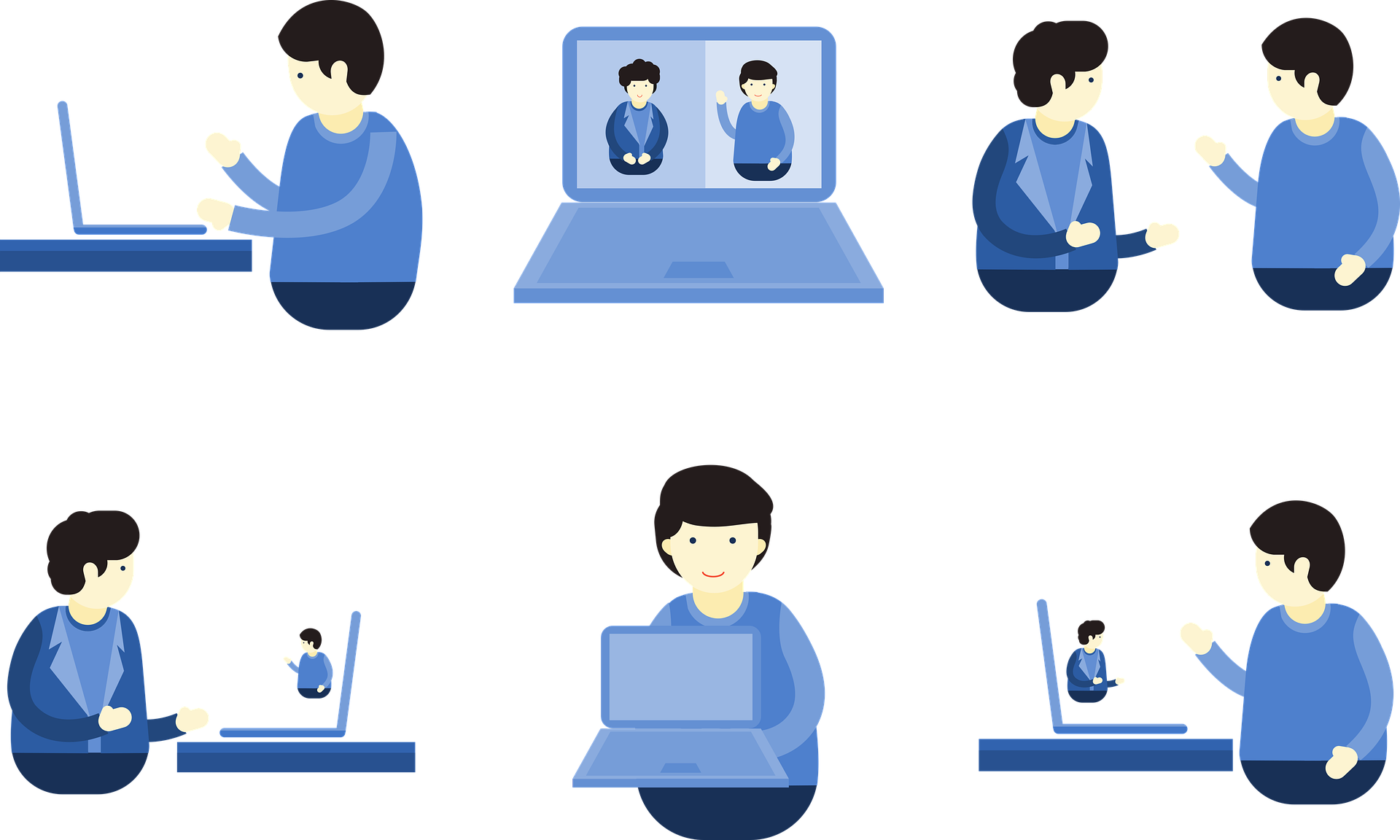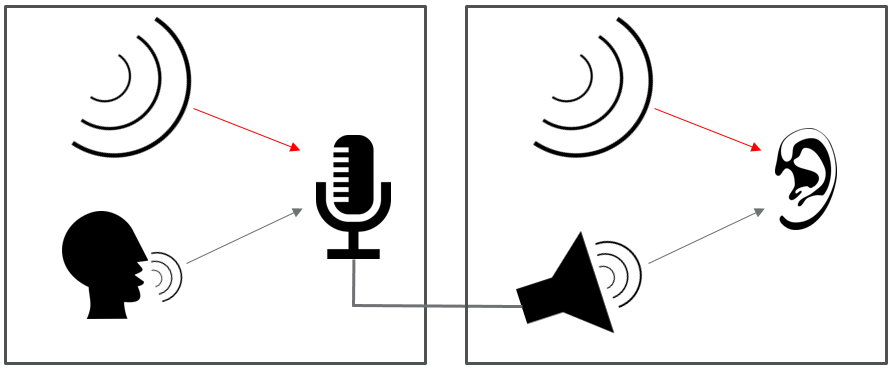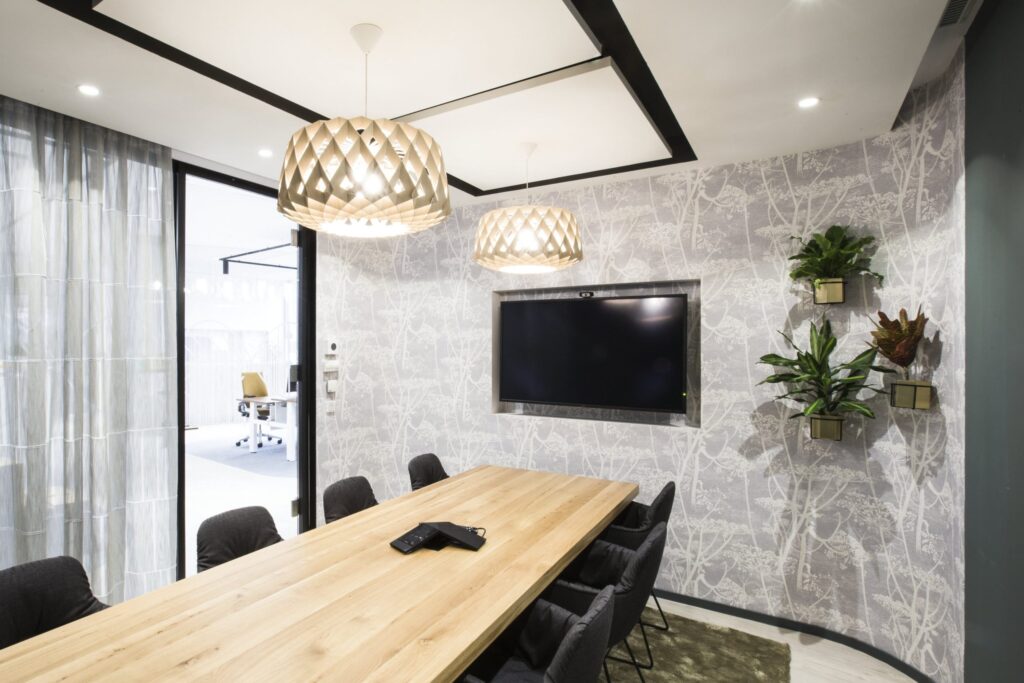
It has been predicted again and again that video conferencing would become a ubiquitous part of professional life. Now, it seems it is here to stay, but there are still work to be done before this technology can live up to its full potential.

Never before have so much professional interaction taken place remotely, through online meetups. Since the beginning of the Corona crisis, downloads of video conferencing apps have soared to unprecedented heights (1). But video conferencing has been on the rise for many years and holds a great deal of potential for bettering both businesses and the world at large. It is most likely here to stay and for most of us, our professional life have already changed forever because of it.
Unfortunately, video conferencing is still a problematic technology.
Even in a time where many have state of the art electro acoustic equipment available, over 46 % of users of video conferencing still report audio quality detracts from their interactions (2), with audio quality also being the most frequently reported problem of video conferencing (3).
No equipment or software can remove the effects of bad room acoustic design on communication through video conferencing. And, as we will discuss below, when it comes to video conferencing, it is twice as important than in normal rooms.
Welcome to this Acoustic Bulletin Design Dive, where we will give you a sound update on the state of videoconferencing, the acoustic design theory and basic guidelines for equipment.

The state of video conferencing
Already in 2019 we saw a clear increase in this form of professional communication (4) and even before that, it has been trumpeted as the future of meetings for quite few years (5). And it is no wonder considering the benefits of this technology.
For one, video conferencing has the potential of lowering a company’s CO2 footprint by simply reducing travelling time. This simultaneously unlocks periods of low to no activity, where employees are stuck in transit. Furthermore, it unlocks monetary capacity either for the employer or employee, and sometimes both. If that isn’t enough of an argument, 94 % of businesses utilizing video conferencing say that it increases productivity (6). Web meetings simply minimize redundant chatter during meetings as it naturally facilitates a clearer distinction between speaker and listener during the interaction. By the same token, video conference meetings naturally puts higher demands on meeting discipline. This automatically creates clearer goals, agendas and planning not to mention prior coordination between meeting contributors, all of which is sorely lacking in many modern businesses.
Ordinary meetings might well be one of the most ineffective parts of modern organizational culture, with as many as 71 % saying that meetings are completely unproductive and a waste of time (7).

Like all other tools, video conferencing naturally has its downsides, but the potential upsides can almost seem too good to be true. So what are the barriers for unlocking this potential?
Basically, all these potentials rests on the assumption that information is being transmitted faithfully and clearly. Providers of software as well, as audio and video equipment, have been in a race for developing the best tools and solutions for video conferencing for many years. Both software and equipment is cheaper, easier, faster, more compatible and more intelligent than ever. We have now reached a point where any advancements in these fields are incremental at best. Still, the electro acoustic equipment is often installed in a suboptimal or even faulty manner in relation to the room (more on this later), but that is not the biggest problem. The biggest problem is that the rooms used more often than not, was never acoustically fit for purpose in the first place.
As mentioned earlier, the primary problem of video conferencing is consistently lacking audio quality and the main reason for this, is lacking room acoustic treatment. This is baffling considering that sound is the most important aspect of video conferencing.
Actually, sound seems to be even more important than previously expected as new studies seem suggest that, tone of voice is the most effective way of conveying not only facts and data, but also emotions (8).

Bad room acoustics causes audio artifacts, creates noise, lessens speech quality and cannot be remedied by any equipment or digital tools. The degraded audio quality from bad acoustics increases fatigue, lessens engagement and can take a toll on the meeting participants along with several other factors (9). Worst of all, it negates the very reason for the meeting in the first place by degrading communication quality. The human brain is pretty good at filtering out noise, but it takes up a significant amount of mental energy. This is energy that could be far better spend on remembering, associating, idea generation, planning, note taking etc.
Good video conferencing doesn’t just need good room acoustics; it needs great acoustics.
Room Acoustics and Video Conferencing – Three rooms, one interaction
Rooms for video conferencing is perhaps one of the room types which has the highest demands for thorough acoustic treatment, save for perhaps some recording studios and various rooms for the hearing impaired. In his 2015 paper “Room acoustical parameters for two electronically connected rooms,” (10) Peter Svensson explores the intricacies of room acoustic design for video conferencing. The following is largely based on this paper and his presentation at Ecophon International Acoustics Seminar 2015.

Firstly, it is important to note that in the acoustic analysis of video conferencing, we are dealing with the acoustics of two rooms at once. This is however not to be confused with the classical coupled room situation (11). In rooms for video conferencing sound is only transmitted from one room to the other at any given time, as feedback is suppressed through digital means. From an acoustical perspective, we can therefor view this situation as a one-way transmission.
It is however still important to remember, that each room still has to serve three acoustic functions: It must be a good meeting room, a good listening room and a good recording room.

The transmitted sound is in this way affected by the reverberation in both rooms. This entails a convolution of two impulse responses. This is highly significant as a normal impulse response has an exponential decay, but a convolution of two impulse responses has a non-exponential decay – it is far longer than the addition of the individual impulse responses, and thus degrades the audio quality to a far greater degree.
More precisely, this could mean as much as a C50 decrease of 7 dB and a 50 % increase of EDT. Or to put it in layman’s terms, even in what is thought to be decent acoustic conditions for a conference room, this phenomenon of having the reverberation of two connected rooms affecting the interaction, can degrade audio and communication quality to an impressive degree.
In regards to recommendations for functional requirements for video conference rooms, it follows logically from the acoustic conditions, that target values for room acoustic parameters should be about twice as strict, as for normal conference rooms. It could therefore be recommended that rooms for video conferencing should ideally have a reverberation time of 0.3 seconds for the highest quality of video conferencing or maximally 0.4 seconds. Normal recommendations for speech clarity in conference rooms could be a C50 of around 6 which leads to an ideal recommendation of about 13 dB and no lower than 9 dB. Considering the typical size of this type of room, frequency range of the human voice and specialized electro acoustic equipment a deviation of 40 % at 125 Hz and 15 % at 250 Hz can be acceptable, particularly in smaller rooms. Background noise levels should ideally be 30 dB or maximally 35 dB while walls should have a sound insulation of R’w ≥ 48 dB and R’w ≥ 38 for doors.
* In the frequency range 125-4000 Hz with a permitted deviation of 40 % at 125 Hz and 15 % at 250 Hz.
* Recommendations is based on Peter Svensson’s research.
So when it comes to acoustic design of these types of rooms, a class-A acoustic ceiling and class-A wall absorbers on two perpendicular surfaces, as well as two opposing surfaces, is non-negotiable in most cases. This will of course also help mitigate the Schroeder frequency and flutter echoes. This design requirement necessitates wall absorbers with a thickness of about 40 mm as well as exposable room height for a suspended acoustic ceiling. Both of these requirements should be considered from the very beginning of the design phase of the room. As a rule of thumb, designing the room in an irregular shape, such a slanted wall surfaces, will improve the acoustics.*
Beyond the acoustics aspects, the surfaces of wall absorbers should be cleanable and robust as users easily brush up against them in smaller rooms.
Equipment – Guidelines for setup
At Acoustic Bulletin we off course mainly deal with room acoustics, but for this special case, we will provide some easy and “light” tips on audio equipment needed for successful design of rooms for video conferencing. It is however important to note that this is a specialized field, and we recommend that you consult with your provider of audio-visual equipment to achieve the best possible results.
There are roughly two types of microphones used in video conference rooms. The most uncommon one is the directional microphone. The advantage of this type of microphone is that it is better at isolating the direct sound from the speaker which makes it less affected by reverberation and other irrelevant noise generated in the room. The clear disadvantage is that it only picks up sound from the relatively narrow zone it is directed towards. In almost all cases this entails having one microphone for every speaker position. This not only increases the need for microphones, but also implies that speakers must stay within the zone that the microphone is directed towards. Therefore, directional microphones can be used in particularly large rooms with longer reverberation time or rooms that cannot be acoustically renovated properly and is in most cases not suitable for normal rooms for video conferencing.

The most commonly used microphone in rooms for video conferencing is the omnidirectional microphone, which picks up sound from the entire room. The downside of this type of microphone, is that it is more susceptible to picking up reverberation and other sounds generated during video conferences. The advantage is that it takes up very little space and is more versatile as it is not particularly affected by the position of the speakers. For most normal businesses this is the most affordable, flexible and intuitive solution and is therefore our recommendation.

It should be noted that the further the microphones are positioned away from the speaker, the less direct sound energy will be picked up and the more reverberation will degrade the audio quality. This naturally depends on the degree of acoustic treatment present, but for the above mentioned recommendations for reverberation time we recommend a maximum distance of about 2 meters from an omnidirectional microphone to any given speaker. This sort of microphone is almost always placed along the middle of a conference table which naturally leaves it susceptible to pick up vibrations from this surface when for example a meeting participant puts down her coffee cup.
It is therefore important to choose a microphone with a vibration absorbing footing or to place a soft underlay under it.
Most modern loudspeakers integrated in screens or sold with video conferencing equipment will provide sufficient speech intelligibility in normal conference rooms for 6 – 8 participant, if the above functional recommendations are upheld. Still, having external loudspeakers will almost always create a more satisfying result. We also strongly recommend that loudspeakers designed for lying flat on the conference table and pointing towards the ceiling should be avoided.
————————————————————————————————–
Do you want more concrete guidance on products and solutions for your video conferencing project? We recommend that you contact your local Ecophon office: www.ecophon.com
Sources:
(2) https://www.lifesize.com/en/video-conferencing-blog/video-conferencing-statistics
(3) https://www.owllabs.com/state-of-video-conferencing/2019
(4) https://insights.som.yale.edu/insights/is-videoconferencing-still-the-future
(6) https://www.slideshare.net/bluejeannw/10-must-know-video-conferencing-stats
(7) https://hbr.org/2017/07/stop-the-meeting-madness
(9) https://www.bbc.com/worklife/article/20200421-why-zoom-video-chats-are-so-exhausting
(10) Svensson, U Peter & Zidan , Hassan El-Bannna (2015): ”Room acoustical parameters of two electronically connected rooms.” Acoustics research centre, department of electronics and telecommnutications, Norwegian University of Science and Technology (NTNU), Trondheim, Norway, The Journal of the Acoustical Society of America 138, 2235.
(11) http://www.amsacoustics.co.uk/pdfs/IR-50-TCR.pdf
(12) Xiang, Ning (2017): “Architectural Acoustics Handbook” School of Architecture, Rensselaer Polytechnic Institute, J.Ross Publishing, USA. pp. 59-74.


